

What Is Secondary School? How is it compared to High School?
- By Emily Summers
- July 25, 2023
Parental involvement in education plays a crucial role in shaping a child’s academic journey and overall development. It refers to the active participation of parents in their child’s learning process, supporting and encouraging them in various educational endeavors.
Secondary education, often confused with high school, refers to the educational level between primary and higher education. It encompasses middle and high schools, serving as a bridge to higher education or vocational training.
Understanding the differences between secondary and high school is essential for parents to support their children effectively. By knowing the distinctions and purposes of these educational stages, parents can actively engage with their child’s learning journey and make informed decisions to foster their academic growth and well-being.
Understanding Secondary School Education
Secondary school systems around the world, comparison between secondary school and high school, academic and career focus, preparing for higher education, challenges and opportunities in secondary school, success stories and case studies.
Secondary school education is the educational level between primary and higher education, usually serving students aged 12 to 18 . It typically comprises two distinct stages: lower and upper secondary, each lasting around three years. Lower secondary students receive a broad education in various subjects, including mathematics, science, languages, and social sciences. Upper secondary school offers more specialized courses, enabling students to focus on specific subjects of interest or career paths.
The curriculum varies by country, but common subjects include English, mathematics, sciences, history, and foreign languages. This stage aims to prepare students for higher education or vocational training, equipping them with essential skills and knowledge for future endeavors.

Secondary school systems worldwide exhibit significant variations, reflecting diverse educational approaches and cultural norms. In the UK, students undergo General Certificate of Secondary Education (GCSE) examinations before advancing to A-levels . In Canada, provinces like Ontario offer four-year high school programs leading to diplomas. Australia features a comprehensive curriculum, including core subjects and elective choices. India’s secondary education involves the Central Board of Secondary Education (CBSE) and the Indian Certificate of Secondary Education (ICSE) board, each with distinct curricula. Differences in grading, emphasis on standardized tests, and availability of vocational training further illustrate the unique characteristics of secondary school systems across the globe.
Secondary school and high school share similarities, as both cater to students in the same age group. However, they differ in structure and nomenclature across countries.
In some regions, “secondary school” encompasses both middle and high school, while in others, “high school” refers to the last stage of secondary education. Grading systems and evaluation methods can vary; some use letter grades, while others employ numeric scales.
Extracurricular activities play a vital role in both settings, fostering personal growth and teamwork. Student life in secondary school might emphasize foundational learning, while high school may focus on specialization and college preparation, reflecting distinctions in educational goals.
Secondary schools have a dual focus on academic excellence and career preparation. They offer specialized programs or tracks tailored to students’ interests and aptitudes, such as Science, Technology, Engineering, Math (STEM), arts, business, or vocational pathways. These programs equip students with practical skills and knowledge, shaping their career aspirations early on.
Studies indicate that secondary education significantly impacts future career opportunities, with higher educational attainment correlating to increased earning potential and career prospects. Graduates from specialized programs often find better alignment between their education and chosen career paths, leading to enhanced job satisfaction and success in the workforce. Such academic and career-focused initiatives empower students to pursue fulfilling and prosperous futures.

Secondary schools are pivotal in preparing students for higher education, laying the foundation for successful college or university experiences. Alongside a rigorous academic curriculum, they offer guidance on standardized tests like SAT, ACT, or other regional exams, which are essential for college applications.
Counselors assist with college selection, application essays, and interviews, ensuring students present their best selves to admission committees. Extracurricular activities, leadership roles, and community involvement in secondary school also influence college admissions, showcasing applicants’ unique qualities and potential contributions. Through comprehensive support and opportunities, secondary schools empower students to excel academically and personally, fostering a smooth transition into higher education.
In secondary school, students encounter challenges such as academic pressure, social adjustments, and identity exploration. However, schools offer support services, including counseling, tutoring, and mentorship programs, to address these issues.
Resources like libraries, technology, and extracurricular activities create opportunities for holistic growth. Initiatives like personalized learning, project-based curricula, and inclusive education aim to improve the quality of secondary school education. Vocational training programs and industry partnerships equip students with practical skills and career readiness. Additionally, efforts to enhance teacher professional development and incorporate modern teaching methodologies foster a conducive learning environment, empowering students to overcome challenges and seize opportunities for a successful academic journey.

Success stories and case studies abound, showcasing famous individuals who thrived after secondary school education. Entrepreneurs like Elon Musk and Mark Zuckerberg achieved remarkable success, as did Nobel laureates and accomplished professionals across diverse fields.
News often highlights successful secondary school programs or reforms, such as innovative teaching methods leading to improved student outcomes. Notable examples include project-based learning initiatives , mentorship programs, and inclusive education efforts, which have transformed schools and positively impacted student achievements. These inspiring tales and educational advancements remind us of secondary education’s immense potential and transformative power in shaping promising futures.
Secondary school education plays a critical role in shaping students’ academic and professional journeys. Through specialized programs, extracurricular activities, and tailored support, it prepares them for higher education and future career opportunities. Understanding the importance of secondary education and its potential impact on individual success underscores the need for continuous improvement and investment in innovative approaches, ensuring that every student can unlock their full potential and thrive in the ever-changing world ahead.
About the Author
Emily summers.

How Summer Camp Fosters Social Skills

6 reasons to read to your child regularly at home

Things to Know About Developmental Disability Services

Roofing 101 Essential Education for Future Industry Professionals

Debunking the Myth of Roberto Nevilis: Who Really Invented Homework?

Is the D Important in Pharmacy? Why Pharm.D or RPh Degrees Shouldn’t Matter

How to Email a Professor: Guide on How to Start and End an Email Conversation

Everything You Need to Know About Getting a Post-Secondary Education

Grammar Corner: What’s The Difference Between Analysis vs Analyses?

- Best Online Colleges & Universities
- Best Nationally Accredited Online Colleges & Universities
- Regionally Accredited Online Colleges
- Online Colleges That Offer Free Laptops
- Self-Paced Online College Degrees
- Best Online Universities & Colleges
- Cheapest and Most Affordable Online Colleges
- The Most Affordable Online Master's Programs
- Best Online MBA Programs
- Most Affordable Online MBA Programs
- Online MBA Programs with No GMAT Requirement
- Cheapest Law Schools Online
- Quickest Online Master's Degrees
- Easiest PhD and Shortest Doctoral Programs Online
- Fastest Accelerated Online Degree Programs
- Best Accredited Online Law Schools
- 4-Week Online Course for Medical Coding and Billing
- Accredited Medical Billing and Coding Schools Online with Financial Aid
- Become a Medical Assistant in 6 Weeks
- Most Useless College Degrees
- 6 Month Certificate Programs That Pay Well
- Accredited Online Colleges
- Search Programs
Online Colleges That Provide Laptops
Fastest accelerated online degree programs by degree level 2024, easiest phd and shortest doctoral programs online 2024, most affordable online mba programs 2024, 6 month certificate programs that pay well 2024, best accredited online law schools 2023, online colleges that provide free laptops, what is secondary school and how does it differ from high school.
Secondary School Education: Preparing Your Child for the Future
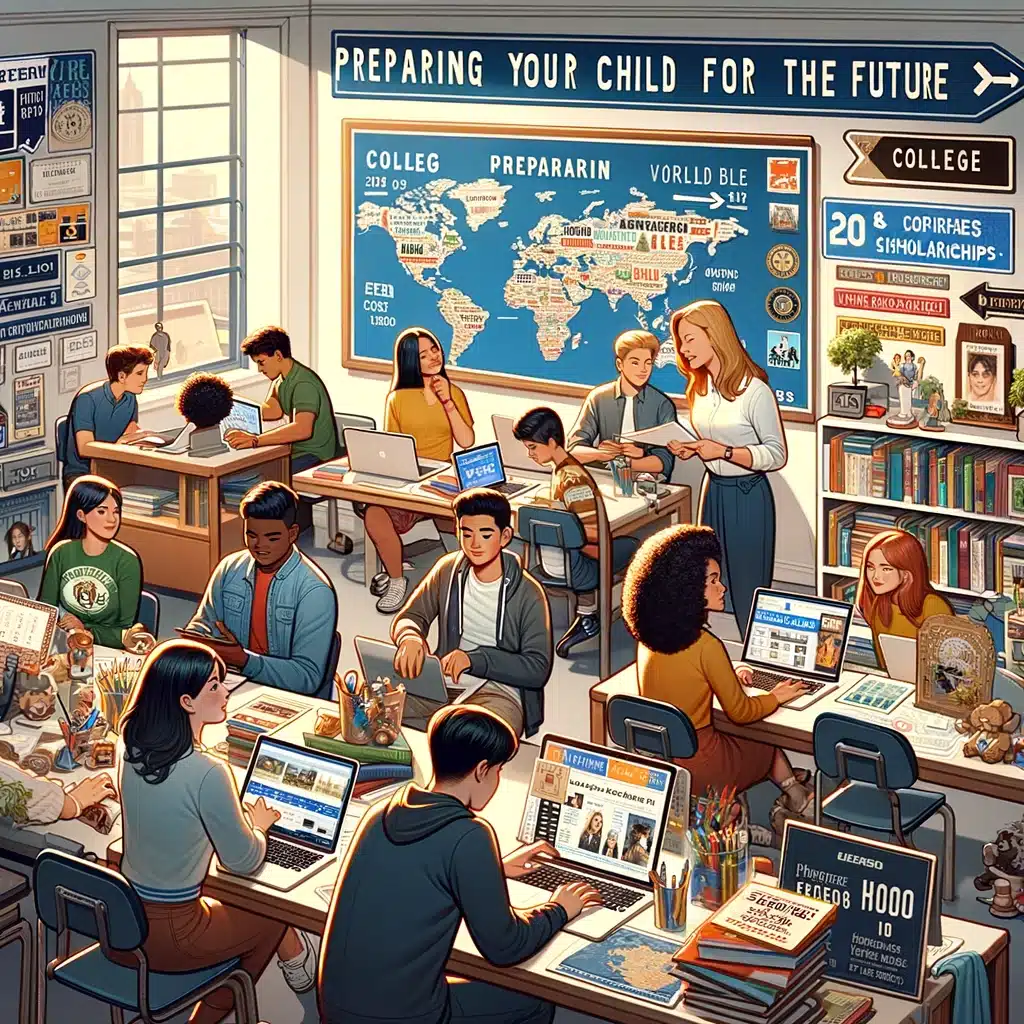
Understanding the educational system's various terms can often lead to confusion, particularly when they seemingly change from one country to another.
The definition of secondary school is a prime example of this variability, and its relationship to other educational institutions like high school and college is frequently misunderstood.
At its core, a secondary school is an educational stage following primary education and preceding tertiary education. Across the globe, the term has broad applications but generally reflects a stage where students are prepped for either higher education or vocational opportunities.
In different regions, secondary education encompasses various names and forms, such as high school, preparatory school, or senior secondary school.
Despite the nomenclature differences, the common thread worldwide is that completing this level signifies a readiness to take the subsequent steps in life, be it further education or entering the workforce.
Each country might present a different framework for what secondary education entails, but the underlying objective remains consistent – to equip students with the skills and knowledge necessary for adulthood.
Key Takeaways
- Secondary school serves as the bridge between primary education and higher education or vocational training.
- The terminology and structure of secondary education vary internationally but maintain a core purpose of preparing students for future endeavors.
- Completion of secondary education is universally recognized as a milestone indicating readiness for the next life phase.
Secondary Education Overview
- Secondary School : Follows primary education; precedes tertiary education.
- Levels : Separates into lower and Upper Secondary .
- Curriculum : Encompasses language arts , social studies , etc.
- Duration : Typically mandatory to a certain age, varies by country.
- Advanced Education : Prepares for college or vocational training.
- Assessment : Involves grading and standardized tests .
- Features : May include libraries , counseling , extracurricular activities .
Understanding U.S. Middle and High Schools
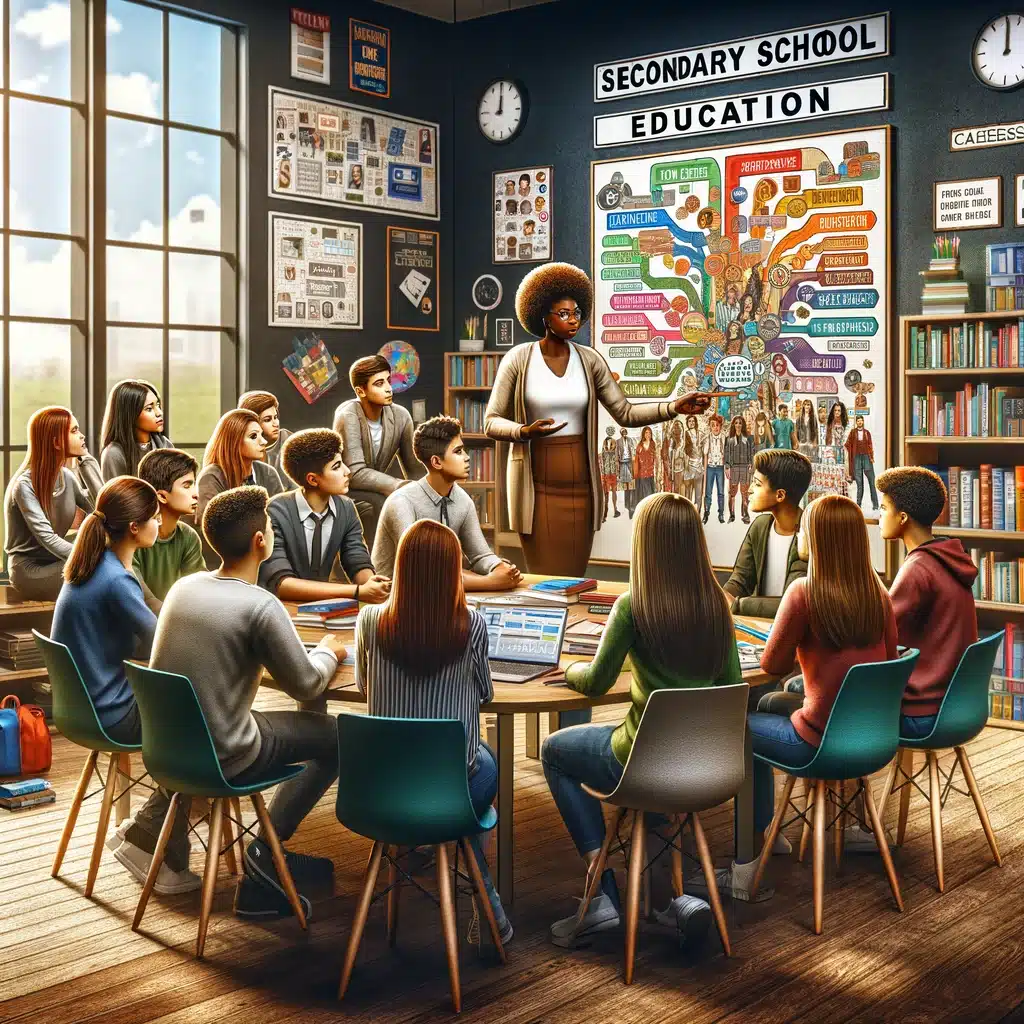
In the United States, secondary education typically encompasses the years following elementary school.
This phase is broadly divided into two categories: middle school or junior high school , covering grades 6-8 , and high school , which includes grades 9-12 .
While the term 'secondary school' is not commonly used to describe these institutions, they collectively serve the educational stage after elementary school.
Secondary School Versus High School
In the U.S., secondary school includes grades 6-12, but high school specifically refers to grades 9-12.
In many English-speaking regions, these terms are synonymous, both representing the educational stage following elementary school.
High School Education in North America
- In the U.S. , high school typically encompasses grades 9-12 . Attendance is mandatory.
- Post-secondary paths in the U.S. include college, university, military service, or direct entry into the workforce.
- Canada mirrors the U.S. structure, with high school generally spanning grades 9-12 .
- Exception to note: Quebec's high school system ranges from grades 7-11 , with post-secondary options following.
Educational Pathways in Australia and New Zealand
- Australia & New Zealand : Mandatory education concludes after Year 10.
- Secondary Education : Post-Year 10 options include entering the workforce or starting an apprenticeship.
- Senior Secondary Education : Years 11 and 12 serve as a bridge to university or vocational training.
U.K. Secondary Education Overview
- Lyceum and Grammar Schools : Students attend from ages 12-16.
- General Certificate of Secondary Education (GCSE) : Key qualification obtained after lower secondary.
- Post-GCSE Education : Optional upper secondary education, for ages 16-18, geared towards university preparation.
Secondary Education Overview in South Africa
- Level: Grades 8-12
- Compulsory: Up to Grade 10
- Terminology: Known interchangeably as secondary school, high school, or college
College Versus Secondary Education
- Secondary School: Pre-university educational level.
- Tertiary Education: Refers to college and beyond.
- Terminology Variance: Some nations equate 'college' with high school.
Paths to Take Post-High School or Secondary School Education
Pursuing further academic studies.
For those looking to delve into academic theory and gain advanced knowledge , pursuing a diploma or a degree at vocational schools or traditional universities may be the choice. By engaging in further education, students can connect with peers, grow personally, and pave the way for a career in a field they are passionate about. For those concerned about costs or schedule flexibility , numerous institutions offer online degree programs , some even providing tuition-free options.
Undertaking Vocational Preparation
Apprenticeships provide practical, hands-on experience and are ideal for individuals eager to step into the workforce with guidance from experienced professionals. These programs are quite prevalent in the trades, healthcare technology, and other skilled labor sectors, allowing apprentices to earn while they learn and gain valuable industry insights.
Engaging in Specialized Training Courses
For careers requiring focused knowledge without the breadth of a college degree, training programs in vocational education are an excellent alternative. They offer a quicker pathway to employment in specialized roles, such as dental hygienists, IT support, web development, or legal assistants. These courses are often shorter and more skill-specific compared to a four-year degree.
Directly Entering the Labor Market
Starting a career immediately after graduation is an option for those ready to leap into employment. This route suits individuals who have a clear career goal in mind, wish to gain work experience before committing to further studies, or plan to accumulate savings. It also gives space for those who might want to take some time to explore the world or their personal interests.
Enlisting in the Armed Forces
For those with a strong desire to serve their country, joining the military can be a fulfilling endeavor. The military provides structured career paths, valuable life experiences, and educational benefits. Enlisting opens up opportunities to receive training in various areas and can include financial support for future educational pursuits.
By weighing these options, individuals can choose the path that aligns with their aspirations and circumstances. Each choice offers unique opportunities and challenges, and it's essential to consider personal goals, interests, and values when making a decision. Whether it's through further education, apprenticeships, training programs, immediate employment, or military service, success can be achieved with dedication and a strategic approach to one's future.
Secondary School: Common Inquiries
Ages typically enrolled in secondary education.
Secondary school traditionally encompasses the educational stage following primary school. This period often sees students ranging in age from approximately 12 to 18 years old. This range can differ by country or education system.
Curriculum: Secondary vs. Primary Schools
The curriculum in secondary schools marks a shift from the often broad and foundational subjects of primary school to a more in-depth and specialized approach. Secondary education may introduce:
- Advanced mathematics and sciences
- Literature and advanced language arts
- Foreign languages
- Social studies, including history and geography
- Electives tailored to student interest, such as arts, technology, or vocational training
Middle School vs. Secondary School: Distinguishing Features
While terms and structures vary, the distinction between middle school and secondary school typically lies in educational progression. Middle school generally serves as a transitional phase between elementary and secondary education, focusing on:
- Grades 6-8 (ages 11-14 approximately)
- A generalized curriculum bridging elementary and high school
In contrast, secondary school consists of later grades where the education concentrates on:
- Preparation for higher education or vocational pursuits
- Specialized subjects for career or college readiness
Variations in Secondary Education Among Different Nations
Across the globe, secondary education systems reflect diverse structures, curricula, and graduation requirements. Factors influencing these differences include:
- Cultural values
- Economic factors
- Educational philosophies
- Government policies
Grade Levels Constituting Secondary Education
Secondary education typically includes the final years of compulsory education. Grade levels may be delineated as:
- Junior high or middle school grades (6th to 8th or 7th to 9th)
- High school grades (9th to 12th or 10th to 12th)
Examples of Secondary Educational Institutions
Educational institutions considered as secondary schools can range from general public high schools to more specialized types such as:
- Technical or vocational high schools
- Private preparatory academies
- Magnet or charter schools focusing on specific disciplines
- Religious-based institutions offering secondary-level education
Secondary Schools - Frequently Asked Questions
What does being a secondary school mean?
A secondary school is an educational institution that follows primary (elementary) education and precedes tertiary (higher) education. It typically caters to students who are preparing for higher education or vocational training, generally ranging in age from approximately 12 to 18 years.
Is a secondary school the same as a high school?
In many countries, the terms "secondary school" and "high school" are used interchangeably. However, in some regions, "secondary school" can include both middle school/junior high (covering earlier grades like 6-8) and high school (covering later grades like 9-12).
What is secondary school in the USA?
In the USA, secondary education typically encompasses middle school or junior high (grades 6-8) and high school (grades 9-12). While the term "secondary school" is less commonly used, it generally refers to the entire span from grades 6 through 12.
What is an example of a secondary school?
An example of a secondary school could be any institution that offers education to students typically between the ages of 12 and 18. This could be a public high school in the United States, a grammar school in the United Kingdom, or a gymnasium in Germany.
What is an example of a secondary education?
Secondary education can be exemplified by the curriculum and learning experiences designed for high school students in the United States, which includes courses in mathematics, sciences, English, social studies, and electives in areas like arts and technology.
Is higher education the same as secondary education?
No, higher education is not the same as secondary education. Higher education refers to the level of learning that follows the completion of secondary education, such as programs offered at universities and colleges leading to degrees or other qualifications.
What is level of education?
The level of education refers to the staging of learning that a person has completed. The typical progression includes primary education (elementary school), secondary education (middle and high school), and tertiary education (college or university).
What is secondary level education in Nepal?
In Nepal, secondary level education includes grades 9 to 12, divided into lower secondary (grades 9-10) and upper secondary (grades 11-12). Students in these grades typically prepare for the School Leaving Certificate (SLC) exams at grade 10, followed by the Higher Secondary Education Board (HSEB) exams at the end of grade 12.
Take the next step toward your future with online learning.
You might also like.

Accelerated Bachelor's Degree Online

What Are The 12 Ivy League Schools

Hardest AP Classes

Contact information
Quick links, subscribe to our newsletter.

- History & Society
- Science & Tech
- Biographies
- Animals & Nature
- Geography & Travel
- Arts & Culture
- Games & Quizzes
- On This Day
- One Good Fact
- New Articles
- Lifestyles & Social Issues
- Philosophy & Religion
- Politics, Law & Government
- World History
- Health & Medicine
- Browse Biographies
- Birds, Reptiles & Other Vertebrates
- Bugs, Mollusks & Other Invertebrates
- Environment
- Fossils & Geologic Time
- Entertainment & Pop Culture
- Sports & Recreation
- Visual Arts
- Demystified
- Image Galleries
- Infographics
- Top Questions
- Britannica Kids
- Saving Earth
- Space Next 50
- Student Center

secondary education summary
secondary education , Traditional second stage in formal education, typically beginning at ages 11–13 and ending usually at ages 15–18. The distinction between elementary education and secondary education has gradually become less marked, because of the proliferation of middle schools, junior high schools, and other divisions.


- Toggle navigation
- Explore Themes
- Document Library
- Visualisation Gallery
- Methodology
- Data for Sustainable Development - UIS Blog
- Training and Workshops
- UNESCO website
Secondary education (ISCED 2 and 3)
Secondary education provides learning and educational activities building on primary education and preparing for both first labour market entry as well as post-secondary non-tertiary and tertiary education. Broadly speaking, secondary education aims at learning at an intermediate level of complexity. ISCED distinguishes lower and upper secondary education.
Source definition
This site belongs to UNESCO's International Institute for Educational Planning

IIEP Learning Portal

Search form
Secondary education.
Secondary education provides learning and educational activities building on primary education and preparing for labour market entry, post-secondary non-tertiary education and tertiary education. Broadly speaking, secondary education aims at learning at an intermediate level of complexity. ISCED distinguishes between lower and upper secondary education (ISCED levels 2 and 3).
UIS. 2012. International Standard Classification of Education, ISCED 2011 . Montreal: UIS.
While the expansion of secondary education has been significant, challenges remain. Millions of students leave school without completing 12 years of education. Furthermore, expansion does not guarantee equal access and quality of provision. (Jacinto, 2011: 2)
Jacinto, Claudia. 2011. « Meeting the expectations of youth ». IIEP Newsletter XXIX, n o 2.
- Dictionaries home
- American English
- Collocations
- German-English
- Grammar home
- Practical English Usage
- Learn & Practise Grammar (Beta)
- Word Lists home
- My Word Lists
- Recent additions
- Resources home
- Text Checker
Definition of secondary education noun from the Oxford Advanced Learner's Dictionary
secondary education
- primary and secondary education
Questions about grammar and vocabulary?
Find the answers with Practical English Usage online, your indispensable guide to problems in English.
Other results
- General Certificates of Secondary Education
Nearby words
Primary Education vs. Secondary Education
What's the difference.
Primary education and secondary education are two distinct stages of the education system that serve different purposes. Primary education, also known as elementary education, is the first stage of formal education that children receive. It typically covers a period of six to eight years and focuses on building foundational skills in subjects like mathematics, language arts, science, and social studies. Primary education aims to provide a broad-based education and develop basic literacy and numeracy skills. On the other hand, secondary education follows primary education and is usually provided in middle schools, high schools, or secondary schools. It typically covers a period of four to six years and offers a more specialized curriculum, allowing students to explore different subjects in more depth. Secondary education aims to prepare students for higher education or the workforce by providing them with more advanced knowledge and skills in various academic disciplines.
| Attribute | Primary Education | Secondary Education |
|---|---|---|
| Age Range | 5-11 years | 11-18 years |
| Curriculum | Basic subjects: Math, Science, Language Arts, Social Studies | Expanded subjects: Math, Science, Language Arts, Social Studies, Foreign Languages, Arts, Physical Education |
| Focus | Building foundational knowledge and skills | Building on foundational knowledge and preparing for higher education or vocational training |
| Teacher Qualifications | General teaching certification | Subject-specific teaching certification |
| Classroom Structure | One primary teacher for multiple subjects | Multiple subject-specific teachers |
| Assessment | Informal assessments, periodic tests | Formal exams, standardized tests |
| Student Autonomy | Less autonomy, more guidance | More autonomy, self-directed learning |
| Transition | Transition from early childhood education | Transition to higher education or vocational training |
Further Detail
Introduction.
Education is a fundamental aspect of human development, providing individuals with the necessary knowledge and skills to navigate through life. Primary and secondary education are two crucial stages in a student's academic journey. While both aim to provide a solid foundation for learning, they differ in various aspects, including curriculum, teaching methods, and student expectations. In this article, we will explore the attributes of primary education and secondary education, highlighting their similarities and differences.
One of the primary distinctions between primary and secondary education lies in the curriculum. Primary education typically covers a broad range of subjects, including mathematics, language arts, science, social studies, and physical education. The curriculum is designed to introduce students to various disciplines and foster a well-rounded understanding of the world. In contrast, secondary education focuses on more specialized subjects, allowing students to delve deeper into specific areas of interest. Subjects such as biology, chemistry, physics, literature, history, and foreign languages become more advanced, preparing students for higher education or vocational training.
Moreover, primary education often emphasizes the development of foundational skills, such as reading, writing, and basic arithmetic. These skills serve as building blocks for future learning. In secondary education, the curriculum builds upon these foundations, promoting critical thinking, problem-solving, and analytical skills. Students are encouraged to think independently, conduct research, and engage in complex projects that require higher-order thinking.
Teaching Methods
The teaching methods employed in primary and secondary education also differ significantly. Primary education often relies on a more hands-on and interactive approach to engage young learners. Teachers use various techniques, such as storytelling, games, and group activities, to make learning enjoyable and accessible. The focus is on fostering curiosity, creativity, and a love for learning. Classrooms are typically vibrant and colorful, filled with visual aids and educational materials.
In secondary education, teaching methods become more structured and formal. Lectures, discussions, and individual assignments play a more prominent role. Students are expected to take more responsibility for their learning, actively participating in class discussions and completing assignments independently. The emphasis shifts towards developing self-discipline, time management, and study skills necessary for higher education or future careers.
Student Expectations
Primary and secondary education also differ in terms of student expectations. In primary education, the focus is on creating a nurturing and inclusive environment where students feel safe to explore and make mistakes. Teachers provide guidance and support, helping students develop social skills, emotional intelligence, and a sense of belonging. Assessments in primary education are often formative, aiming to identify areas of improvement and provide constructive feedback.
On the other hand, secondary education places greater emphasis on academic achievement and preparing students for future endeavors. Students are expected to take more responsibility for their learning, actively engaging in class discussions, completing assignments, and preparing for exams. Assessments become more summative, evaluating students' understanding of the subject matter and their ability to apply knowledge independently.

Transition and Continuity
Transitioning from primary to secondary education is a significant milestone in a student's academic journey. It marks a shift from a familiar and nurturing environment to a more challenging and independent one. However, efforts are made to ensure continuity in the educational experience. Many schools have programs in place to ease the transition, such as orientation sessions, mentorship programs, and support networks.
Additionally, the curriculum in secondary education often builds upon the knowledge and skills acquired in primary education. This continuity allows students to apply their foundational knowledge to more advanced concepts, fostering a sense of progression and coherence in their learning journey.
Primary and secondary education are crucial stages in a student's academic development. While primary education focuses on building foundational skills and introducing students to a broad range of subjects, secondary education provides a more specialized and in-depth learning experience. The teaching methods, student expectations, and curriculum differ significantly between these two stages. However, both primary and secondary education play vital roles in shaping students' intellectual, social, and emotional growth, preparing them for future success.
Comparisons may contain inaccurate information about people, places, or facts. Please report any issues.
A primer on elementary and secondary education in the United States
Editor’s Note: This report is an excerpt, with minor edits, from Addressing Inequities in the US K-12 Education System , which first appeared in Rebuilding the Pandemic Economy , published by the Aspen Economic Strategy Group in 2021.
This report reviews the basics of the American elementary and secondary education system: Who does what and how do we pay for it? While there are some commonalities across the country, the answers to both questions, it turns out, vary considerably across states. 1
Who does what?
Schools are the institution most visibly and directly responsible for educating students. But many other actors and institutions affect what goes on in schools. Three separate levels of government—local school districts, state governments, and the federal government—are involved in the provision of public education. In addition, non-governmental actors, including teachers’ unions, parent groups, and philanthropists play important roles.
Most 5- to 17-year-old children – about 88%– attend public schools. 2 (Expanding universal schooling to include up to two years of preschool is an active area of discussion which could have far-reaching implications, but we focus on grades K-12 here.) About 9% attend private schools; about a quarter of private school students are in non-sectarian schools, and the remaining three-quarters are about evenly split between Catholic and other religious schools. The remaining 3% of students are homeschooled.
Magnet schools are operated by local school districts but enroll students from across the district; magnet schools often have special curricula—for example, a focus on science or arts—and were sometimes designed specifically to encourage racial integration. Charter schools are publicly funded and operate subject to state regulations; private school regulations and homeschooling requirements are governed by state law and vary across states. Nationally, 6.8% of public school students are enrolled in charter schools; the remainder attend “traditional public schools,” where students are mostly assigned to schools based on their home address and the boundaries school districts draw. Washington, D.C. and Arizona have the highest rates of charter enrollment, with 43 and 19% of their public school students attending charter schools. Several states have little or no charter school enrollment. Prior to the COVID-19 pandemic, nearly all public schooling took place in person, with about 0.6% of students enrolled in virtual schools.
Local School Districts
Over 13,000 local education agencies (LEAs), also known as school districts, are responsible for running traditional public schools. The size and structure of local school districts, as well as the powers they have and how they operate, depend on the state. Some states have hundreds of districts, and others have dozens. District size is mostly historically determined rather than a reflection of current policy choices. But while districts can rarely “choose” to get smaller or larger, district size implicates important trade-offs . Having many school districts operating in a metropolitan area can enhance incentives for school and district administrators to run schools consistent with the preferences of residents, who can vote out leaders or vote with their feet by leaving the district. On the other hand, fragmentation can lead to more segregation by race and income and less equity in funding, though state laws governing how local districts raise revenue may address the funding issues. Larger districts can benefit from economies of scale as the fixed costs of operating a district are spread over more students and they are better able to operate special programs, but large districts can also be difficult to manage. And even though large districts have the potential to pool resources between more- and less-affluent areas, equity challenges persist as staffing patterns lead to different levels of spending at schools within the same district.
School boards can be elected or appointed, and they generally are responsible for hiring the chief school district administrator, the superintendent. In large districts, superintendent turnover is often cited as a barrier to sustained progress on long term plans, though the causation may run in the other direction: Making progress is difficult, and frustration with reform efforts leads to frequent superintendent departures. School districts take in revenue from local, state, and federal sources, and allocate resources—primarily staff—to schools. The bureaucrats in district “central offices” oversee administrative functions including human resources, curriculum and instruction, and compliance with state and federal requirements. The extent to which districts devolve authority over instructional and organizational decisions to the school level varies both across and within states.
State Governments
The U.S. Constitution reserves power over education for the states. States have delegated authority to finance and run schools to local school districts but remain in charge when it comes to elementary and secondary education. State constitutions contain their own—again, varying—language about the right to education, which has given rise to litigation over the level and distribution of school funding in nearly all states over the past half century. States play a major role in school finance, both by sending aid to local school districts and by determining how local districts are allowed to tax and spend, as discussed further below.
State legislatures and state education agencies also influence education through mechanisms outside the school finance system. For example, states may set requirements for teacher certification and high school graduation, regulate or administer retirement systems, determine the ages of compulsory schooling, decide how charter schools will (or will not) be established and regulated, set home-schooling requirements, establish curricular standards or approve specific instructional materials, choose standardized tests and proficiency standards, set systems for school accountability (subject to federal law), and create (or not) education tax credits or vouchers to direct public funds to private schools. Whether and how states approach these issues—and which functions they delegate to local school districts—varies considerably.
Federal Government
The authority of the federal government to direct schools to take specific actions is weak. Federal laws protect access to education for specific groups of students, including students with disabilities and English language learners. Title IX prohibits sex discrimination in education, and the Civil Rights Act prohibits discrimination on the basis of race. The U.S. Department of Education issues regulations and guidance on K-12 laws and oversees grant distribution and compliance. It also collects and shares data and funds research. The Bureau of Indian Education is housed in the Department of the Interior, not the Department of Education.
The federal government influences elementary and secondary education primarily by providing funding—and through the rules surrounding the use of those funds and the conditions that must be met to receive federal funding. Federal aid is typically allocated according to formulas targeting particular populations. The largest formula-aid federal programs are Title I of the Elementary and Secondary Education Act (ESEA), which provides districts funds to support educational opportunity, and the Individuals with Disabilities Education Act (IDEA), for special education. Both allocate funding in part based on child poverty rates. State and school district fiscal personnel ensure that districts comply with rules governing how federal funds can be spent and therefore have direct influence on school environments. Since 1965, in addition to specifying how federal funds can be spent, Congress has required states and districts to adopt other policies as a condition of Title I receipt. The policies have changed over time, but most notably include requiring school districts to desegregate, requiring states to adopt test-based accountability systems, and requiring the use of “evidence-based” approaches.
IDEA establishes protections for students with disabilities in addition to providing funding. The law guarantees their right to a free and appropriate public education in the least restrictive setting and sets out requirements for the use of Individualized Educational Programs. Because of these guarantees, IDEA allows students and families to pursue litigation. Federal law prohibits conditioning funding on the use of any specific curriculum. The Obama Administration’s Race to the Top program was also designed to promote specific policy changes—many related to teacher policy—but through a competitive model under which only select states or districts “won” the funds. For the major formula funds, like Title I and IDEA, the assumption (nearly always true) is that states and districts will adopt the policies required to receive federal aid and all will receive funds; in some cases, those policy changes may have more impact than the money itself. The federal government also allocated significant funding to support schools during the Great Recession and during the COVID-19 pandemic through specially created fiscal stabilization or relief funds; federal funding for schools during the COVID crisis was significantly larger than during the Great Recession.
The federal tax code, while perhaps more visible in its influence on higher education, also serves as a K-12 policy lever. The controversial state and local tax deduction, now limited to $10,000, reduces federal tax collections and subsidizes progressive taxation for state and local spending, including for education. As of 2018, 529 plans, which historically allowed tax-preferred savings only for higher education expenses, can also be used for private K-12 expenses.
Non-Governmental Actors
Notable non-governmental actors in elementary and secondary education include teachers’ unions and schools of education, along with parents, philanthropists, vendors, and other advocates.The nation’s three million public school teachers are a powerful political force, affecting more than just teachers’ compensation. For example, provisions of collective bargaining agreements meant to improve teachers working conditions also limit administrator flexibility. Teachers unions are also important political actors; they play an active role in federal, state, and school board elections and advocate for (or, more often, against) a range of policies affecting education. Union strength varies considerably across U.S. states.
Both states and institutions of higher education play important roles in determining who teaches and the preparation they receive. Policies related to teacher certification and preparation requirements, ranging from whether teachers are tested on academic content to which teachers are eligible to supervise student teachers, vary considerably across states. 3 Meanwhile, reviews of teacher training programs reveal many programs do not do a good job incorporating consensus views of research-based best practices in key areas. To date, schools of education have not been the focus of much policy discussion, but they would be critical partners in any changes to how teachers are trained.
Parents play an important role, through a wide range of channels, in determining what happens in schools. Parents choose schools for their children, either implicitly when they choose where to live or explicitly by enrolling in a charter school, private school, participating in a school district choice program, or homeschooling, though these choices are constrained by income, information, and other factors. They may also raise money through Parent Teacher Associations (PTAs) or other foundations—and determine how it is spent. And they advocate for (or against) specific policies, curriculum, or other aspects of schooling through parent organizations, school boards, or other levels of government. Parents often also advocate for their children to receive certain teachers, placements, evaluation, or services; this is particularly true for parents of students with disabilities, who often must make sure their children receive legally required services and accommodations. Though state and federal policymakers sometimes mandate parent engagement , these mechanisms do not necessarily provide meaningful pathways for parental input and are often dominated by white and higher-SES parents .
Philanthropy also has an important influence on education policy, locally and nationally. Not only do funders support individual schools in traditional ways, but they are also increasingly active in influencing federal and state laws. Part of these philanthropic efforts happen through advocacy groups, including civil rights groups, religious groups, and the hard-to-define “education reform” movement. Finally, the many vendors of curriculum, assessment, and “edtech” products and services bring their own lobbying power.
Paying for school
Research on school finance might be better termed school district finance because districts are the jurisdictions generating and receiving revenue, and districts, not schools, are almost always responsible for spending decisions. School districts typically use staffing models to send resources to schools, specifying how many staff positions (full-time equivalents), rather than dollars, each school gets.
Inflation-adjusted, per-pupil revenue to school districts has increased steadily over time and averaged about $15,500 in 2018-19 (total expenditure, which includes both ongoing and capital expenditure, is similar but we focus on revenue because we are interested in the sources of revenue). Per-pupil revenue growth tends to stall or reverse in recessions and has only recently recovered to levels seen prior to the Great Recession (Figure 1). On average, school districts generated about 46% of their revenue locally, with about 80% of that from property taxes; about 47% of revenue came from state governments and about 8% from the federal government. The share of revenue raised locally has declined from about 56% in the early 1960s to 46% today, while the state and federal shares have grown. Local revenue comes from taxes levied by local school districts, but local school districts often do not have complete control over the taxes they levy themselves, and they almost never determine exactly how much they spend because that depends on how much they receive in state and federal aid. State governments may require school districts to levy certain taxes, limit how much local districts are allowed to tax or spend, or they may implicitly or explicitly redistribute some portion of local tax revenue to other districts.
Both the level of spending and distribution of revenue by source vary substantially across states (Figure 2), with New York, the highest-spending state, spending almost $30,000 per pupil, while Idaho, Utah, and Oklahoma each spent under $10,000 per pupil. (Some, but far from all, of this difference is related to higher labor costs in New York.) Similarly, the local share of revenue varies from less than 5% in Hawaii and Vermont to about 60% in New Hampshire and Nebraska. On average, high-poverty states spend less, but there is also considerable variation in spending among states with similar child poverty rates.
Discussions of school funding equity—and considerable legal action—focus on inequality of funding across school districts within the same state . While people often assume districts serving disadvantaged students spend less per pupil than wealthier districts within a state, per-pupil spending and the child poverty rate are nearly always uncorrelated or positively correlated, with higher-poverty districts spending more on average. Typically, disadvantaged districts receive more state and federal funding, offsetting differences in funding from local sources. Meanwhile, considerable inequality exists between states, and poorer states spend less on average. Figure 3 illustrates an example of this dynamic, showing the relationship between district-level per-pupil spending and the child poverty rate in North Carolina (a relatively low-spending state with county- and city-based districts) and Illinois (a higher-spending state with many smaller districts). In North Carolina, higher poverty districts spend more on average; Illinois is one of only a few states in which this relationship is reversed. But this does not mean poor kids get fewer resources in Illinois than in North Carolina. Indeed, nearly all districts in Illinois spend more than most districts in North Carolina, regardless of poverty rate.
Figure 4 gives a flavor of the wide variation in per-pupil school spending. Nationally, the district at the 10th percentile had per-pupil current expenditure of $8,800, compared to $18,600 at the 90th percentile (for these calculations we focus on current expenditure, which is less volatile year-to-year, rather than revenue). Figure 4 shows that this variation is notably not systematically related to key demographics. For example, on average, poor students attend school in districts that spent $13,023 compared to $13,007 for non-poor students. The average Black student attends school in a district that spent $13,485 per student, compared to $12,918 for Hispanic students and $12,736 for White students. 4 School districts in high-wage areas need to spend more to hire the same staff, but adjusting spending to account for differences in prevailing wages of college graduates (the second set of bars) does not change the picture much.
Does this mean the allocation of spending is fair? Not really. First, to make progress reducing the disparities in outcomes discussed above, schools serving more disadvantaged students will need to spend more on average. Second, these data are measured at the school district level, lumping all schools together. This potentially masks inequality across (as well as within) schools in the same district.
The federal government now requires states to report some spending at the school level; states have only recently released these data. One study using these new data finds that within districts, schools attended by students of color and economically-disadvantaged students tend to have more staff per pupil and to spend more per pupil. These schools also have more novice teachers. How could within-district spending differences systematically correlate with student characteristics, when property taxes and other revenues for the entire district feed into the central budget? Most of what school districts buy is staff, and compensation is largely based on credentials and experience. So schools with less-experienced teachers spend less per pupil than those with more experienced ones, even if they have identical teacher-to-student ratios. Research suggests schools enrolling more economically disadvantaged students, or more students of color, on average have worse working conditions for teachers and experience more teacher turnover. Together, this means that school districts using the same staffing rules for each school—or even allocating more staff to schools serving more economically disadvantaged students—would have different patterns in spending per pupil than staff per pupil.
[1] : For state-specific information, consult state agency websites (e.g., Maryland State Department of Education) for more details. You can find data for all 50 states at the U.S. Department of Education’s National Center for Education Statistics , and information on state-specific policies at the Education Commission of the States .
[2] : The numbers in this section are based on the most recent data available in the Digest of Education Statistics, all of which were collected prior to the COVID-19 pandemic.
[3] : See the not-for-profit National Council on Teacher Quality for standards and reviews of teacher preparation programs, and descriptions of state teacher preparation policies.
[4] : These statistics may be particularly surprising to people given the widely publicized findings of the EdBuild organization that, “ Nonwhite school districts get $23 billion less than white school districts. ” The EdBuild analysis estimates gaps between districts where at least 75% of students are non-White versus at least 75% of students are White. These two types of districts account for 53% of enrollment nationally. The $23 billion refers to state and local revenue (excluding federal revenue), whereas we focus on current expenditure (though patterns for total expenditure or total revenue are similar).
Disclosures: The Brookings Institution is financed through the support of a diverse array of foundations, corporations, governments, individuals, as well as an endowment. A list of donors can be found in our annual reports published online here . The findings, interpretations, and conclusions in this report are solely those of its author(s) and are not influenced by any donation .
About the Authors
Sarah reber, joseph a. pechman senior fellow – economic studies, nora gordon, professor – mccourt school of public policy, georgetown university.
- More from M-W
- To save this word, you'll need to log in. Log In
secondary school
Definition of secondary school
Examples of secondary school in a sentence.
These examples are programmatically compiled from various online sources to illustrate current usage of the word 'secondary school.' Any opinions expressed in the examples do not represent those of Merriam-Webster or its editors. Send us feedback about these examples.
Word History
1835, in the meaning defined above
Dictionary Entries Near secondary school
secondary root
secondary seventh
Cite this Entry
“Secondary school.” Merriam-Webster.com Dictionary , Merriam-Webster, https://www.merriam-webster.com/dictionary/secondary%20school. Accessed 16 Aug. 2024.
Kids Definition
Kids definition of secondary school, more from merriam-webster on secondary school.
Thesaurus: All synonyms and antonyms for secondary school
Subscribe to America's largest dictionary and get thousands more definitions and advanced search—ad free!

Can you solve 4 words at once?
Word of the day.
See Definitions and Examples »
Get Word of the Day daily email!
Popular in Grammar & Usage
Plural and possessive names: a guide, commonly misspelled words, how to use em dashes (—), en dashes (–) , and hyphens (-), absent letters that are heard anyway, how to use accents and diacritical marks, popular in wordplay, 8 words for lesser-known musical instruments, it's a scorcher words for the summer heat, 7 shakespearean insults to make life more interesting, 10 words from taylor swift songs (merriam's version), 9 superb owl words, games & quizzes.


Primary & Secondary Education
Today, an estimated 250 million children around the world are unable to read and write, even after spending three or more years in school. Improving learning outcomes requires strategic reforms and interventions at all levels of the education system.
Primary and Secondary Education At-A-Glance
Education is one of the most important drivers for ending poverty and boosting shared prosperity, as well as for improving health, gender equality, peace, and stability. Guaranteeing the human right to a basic education means little unless schooling leads to learning for all children and youth. Growth, development, and poverty reduction depend on the knowledge and skills that young people acquire—not ...
Stay Connected
News & events, latest events, work with us in primary and secondary education, subscribe to our newsletters.
- Procurement
Additional Resources
This site uses cookies to optimize functionality and give you the best possible experience. If you continue to navigate this website beyond this page, cookies will be placed on your browser. To learn more about cookies, click here .
- ABBREVIATIONS
- BIOGRAPHIES
- CALCULATORS
- CONVERSIONS
- DEFINITIONS

Vocabulary
What does secondary education mean?
Definitions for secondary education sec·onda·ry ed·u·ca·tion, this dictionary definitions page includes all the possible meanings, example usage and translations of the word secondary education ., princeton's wordnet rate this definition: 2.9 / 15 votes.
- secondary education noun
education beyond the elementary grades; provided by a high school or college preparatory school
Wikipedia Rate this definition: 4.4 / 5 votes
Secondary education
Secondary education covers two phases on the International Standard Classification of Education scale. Level 2 or lower secondary education (less common junior secondary education) is considered the second and final phase of basic education, and level 3 (upper) secondary education is the stage before tertiary education. Every country aims to provide basic education, but the systems and terminology remain unique to them. Secondary education typically takes place after six years of primary education and is followed by higher education, vocational education or employment. Like primary education, in most countries secondary education is compulsory, at least until the age of 16. Children typically enter the lower secondary phase around age 11. Compulsory education sometimes extends to age 19. Since 1989, education has been seen as a basic human right for a child; Article 28, of the Convention on the Rights of the Child states that primary education should be free and compulsory while different forms of secondary education, including general and vocational education, should be available and accessible to every child. The terminology has proved difficult, and there was no universal definition before ISCED divided the period between primary education and university into junior secondary education and upper secondary education. In classical and medieval times secondary education was provided by the church for the sons of nobility and to boys preparing for universities and the priesthood. As trade required navigational and scientific skills the church reluctantly expanded the curriculum and widened the intake. With the Reformation the state wrestled the control of learning from the church, and with Comenius and John Locke education changed from being repetition of Latin text to building up knowledge in the child. Education was for the few. Up to the middle of the 19th century, secondary schools were organised to satisfy the needs of different social classes with the labouring classes getting 4 years, the merchant class 5 years and the elite getting 7 years. The rights to a secondary education were codified after 1945, and countries are still working to achieve the goal of mandatory and free secondary education for all youth under 19.
ChatGPT Rate this definition: 0.0 / 0 votes
Secondary education.
Secondary education refers to the formal education that follows primary education and typically prepares students for higher education or the workforce. It is generally provided in middle schools, high schools, or secondary schools, and typically covers a wide range of subjects such as mathematics, sciences, social sciences, languages, literature, arts, and physical education. It focuses on developing critical thinking, problem-solving skills, and knowledge necessary for further education or entering the job market.
Wikidata Rate this definition: 4.0 / 21 votes
Secondary education is the stage of education following primary education. Except in countries where only primary or basic education is compulsory, secondary education includes the final stage of compulsory education, and in many countries it is entirely compulsory. The next stage of education is usually college or university. Secondary education is characterized by transition from primary education for minors to tertiary, "post-secondary", or "higher" education for adults. Depending on the system, schools for this period or a part of it may be called secondary schools, high schools, gymnasia, lyceums, middle schools, sixth-form, sixth-form colleges, vocational schools and preparatory schools, and the exact meaning of any of these varies between the systems.
Matched Categories
How to pronounce secondary education.
Alex US English David US English Mark US English Daniel British Libby British Mia British Karen Australian Hayley Australian Natasha Australian Veena Indian Priya Indian Neerja Indian Zira US English Oliver British Wendy British Fred US English Tessa South African
How to say secondary education in sign language?
Chaldean Numerology
The numerical value of secondary education in Chaldean Numerology is: 4
Pythagorean Numerology
The numerical value of secondary education in Pythagorean Numerology is: 7
Examples of secondary education in a Sentence
Robert Trammell :
In addition to the question of public safety, a weapon in a classroom environment is antithetical to the idea and mission of post- secondary education .
Mira Sorvino :
Primary and especially secondary education is extremely important in preventing trafficking, it allows children to develop critical thinking skills to be able to defend themselves from traffickers and to have the skills that will enable them to have gainful employment to be able to support their families in other ways than being sexually exploited.
Alef Education CEO Geoffrey Alphonso :
Wouldn't it be great if you could look at artificial intelligence and data to drive kids into the right careers, into the right choices for post secondary education ? if a student is doing really well at science, why not pique their interest in what it's like to be a scientist or an astronaut ?
Malala Yousafzai :
This new index is a 'report card' for our leaders, a critical step toward helping ensure that my sisters everywhere can have a quality, safe and free secondary education .
- ^ Princeton's WordNet http://wordnetweb.princeton.edu/perl/webwn?s=secondary education
- ^ Wikipedia https://en.wikipedia.org/wiki/Secondary_Education
- ^ ChatGPT https://chat.openai.com
- ^ Wikidata https://www.wikidata.org/w/index.php?search=secondary education
Word of the Day
Would you like us to send you a free new word definition delivered to your inbox daily.
Please enter your email address:
Citation
Use the citation below to add this definition to your bibliography:.
Style: MLA Chicago APA
"secondary education." Definitions.net. STANDS4 LLC, 2024. Web. 16 Aug. 2024. < https://www.definitions.net/definition/secondary+education >.
Discuss these secondary education definitions with the community:
Report Comment
We're doing our best to make sure our content is useful, accurate and safe. If by any chance you spot an inappropriate comment while navigating through our website please use this form to let us know, and we'll take care of it shortly.
You need to be logged in to favorite .
Create a new account.
Your name: * Required
Your email address: * Required
Pick a user name: * Required
Username: * Required
Password: * Required
Forgot your password? Retrieve it
Are we missing a good definition for secondary education ? Don't keep it to yourself...
Image credit, the web's largest resource for, definitions & translations, a member of the stands4 network, image or illustration of, free, no signup required :, add to chrome, add to firefox, browse definitions.net, are you a words master, in or of the month preceding the present one, Nearby & related entries:.
- secondary dentition noun
- secondary deviance
- secondary diagonal noun
- secondary drowning
- secondary dysmenorrhea noun
- secondary education in the united states
- secondary emission noun
- secondary energy
- secondary fermentation
- secondary generator
Alternative searches for secondary education :
- Search for secondary education on Amazon

Postsecondary Education
Postsecondary education , also known as tertiary education, is the education level that follows the successful completion of secondary education, often referred to as high school. Postsecondary education includes universities and colleges, as well as trade and vocational schools. Postsecondary education encompasses both undergraduate and postgraduate students and usually culminates with a diploma, certification or academic degree. According to the Education Data Initiative , more than 20 million high school students in the United States pursue a postsecondary education every year given the economic security and job opportunities that come with an accreditation.
Postsecondary education encompasses several types of institutions that offer various degrees and diplomas. Vocational schools, otherwise known as trade schools, have gained popularity for the emphasis placed on honing technical, hands-on skills. Students who complete a vocational degree gain job-specific training that prepares them for their future careers. Vocational education courses may include carpentry, plumbing, massage therapy and paralegal studies, among other areas. Community colleges are another popular type of postsecondary education. Students earn an Associate Degree after two years of study, focusing on general education requirements. Many students who complete their postsecondary education at a community college eventually enroll in a degree program offered at a four-year college or university. These four-year institutions remain the most sought-after choice for postsecondary education. Students enrolled in a college or university program may pursue a career in teaching, law, psychiatry and dentistry, among other fields. Depending on the area of study, students may be required to complete further studies—such as law school or medical school—before landing their desired career.
Product Overview
Teaching resources, further reading.
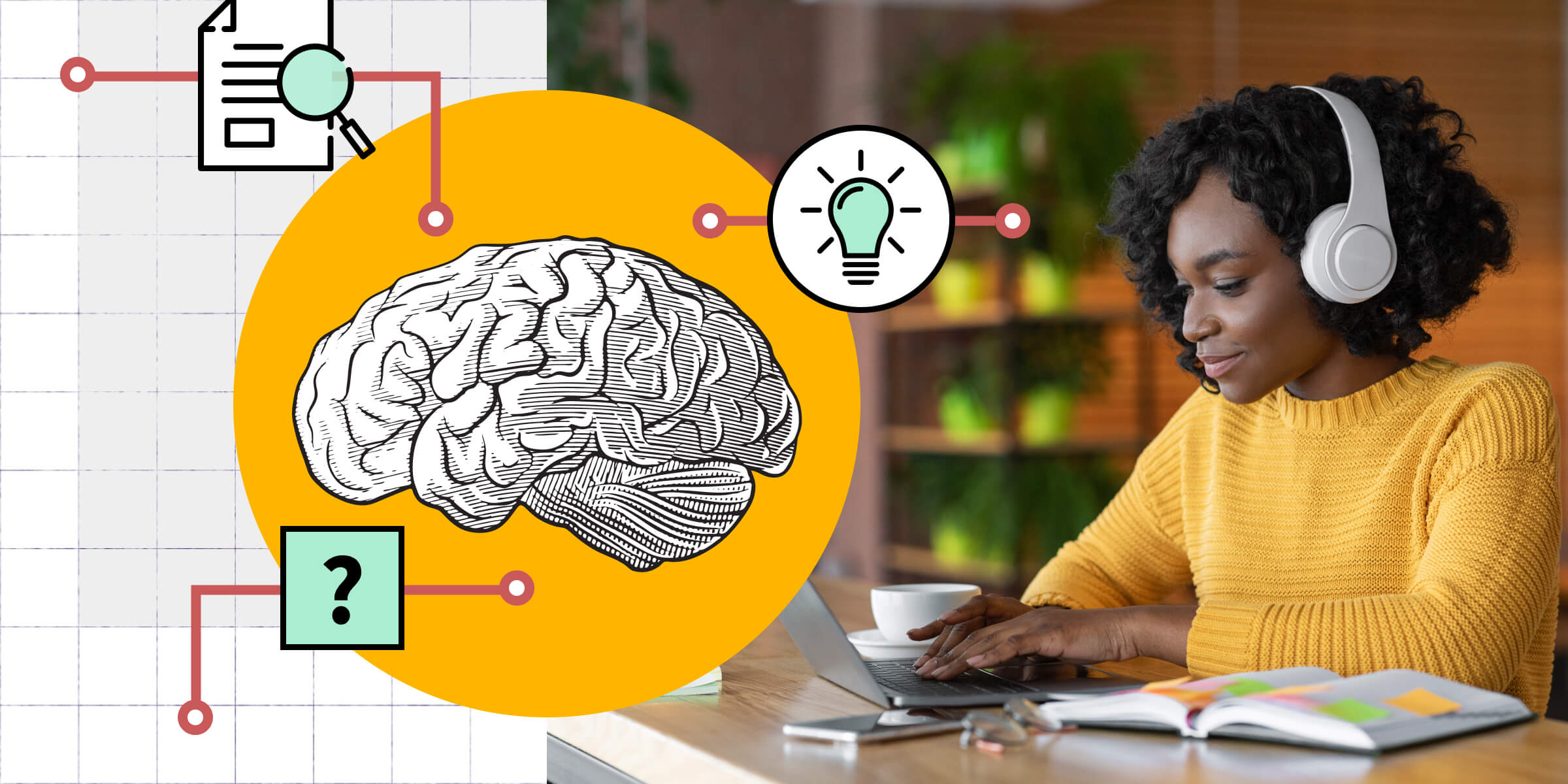
The Ultimate Guide to Metacognition for Post-Secondary Courses

James Lang’s Distracted: Why Students Can’t Focus and What You Can Do About It
More terms starting with p, partial outlines, pausing in lecture, the new higher ed value equation.
Discover what it takes to meet the evolving needs and expectations of today’s students.

Money Smart
- Consumer Resource Center
- Credit and Loans
- Credit Cards
- Credit Reports
- Debt Collection
- Service Member Protections
- Student Loans
- Deposit Accounts
- Cybersecurity
- Financial Privacy
- Mortgage Scams
- Information Needed to Submit a Complaint
- Alliance for Economic Inclusion
- Current Newsletter
- Money Smart for Young Adults
Money Smart News for Kids
- Money Smart for Adults
- Money Smart for Older Adults
- Money Smart for Small Business
- Train-the-Trainer
Money Smart Alliance
- Learn Money Smart
- Training and Events
- Introduction to Reality Fairs
- Communications
- Reality Fair Timetable
- Reality Fair Layout and Accessibility
- Team Member Coordination
- Day of the Fair Coordination
- Participant Profiles
- Evaluation Surveys
- General Planning Tools | Planning Timeline
- General Planning Tools | Supply Checklist
- General Planning Tools | Budget Worksheet
- Sample Communications | Letter/E-mail to Prospective Team Members
- Sample Communications | Sample Letter/E-mail to Prospective Group Leaders/Teachers
- Sample Communications | Sample Letter/E-mail to Parents and Other Caregivers
- Sample Communications|Pre-Fair Talking Points
- Team Member Coordination Tools | Day of the Fair Roles
- Team Member Coordination Tools | Checklist for Pre-Event Communications to Team Members
- Day of Fair Tools | Sign-In Sheet Format
- Day of the Fair Tools | Talking Points for Reality Fair Welcome and Introduction
- Day of the Fair Tools | Facilitation Questions or Closing Discussion
- Booth Information and Materials
- Activities & Events
- Federal Government Small Business Programs & Assistance
- Initiatives
- Resources & Other Reference Material
- Educator Resources
- Implementation Resources
- Lessons from the FDIC Pilot
- The Promise of Youth Savings Programs
- Youth Banking Network
- Youth Employment Resource Center
- National Consumer Protection Week
- FDIC Tips on Appraisal Bias and Valuation to Address Consumers’ Frequently Asked Questions
- Other Regulators and Organizations
- Community Affairs Program and Contacts
Vea esta página en español
The FDIC Money Smart financial education program can help people of all ages enhance their financial skills and create positive banking relationships. First released in 2001 and regularly updated since then, Money Smart has a long track record of success.
Featured Resources

How Money Smart Are You?
Learn about everyday financial topics through 14 interactive games and related resources.

FDIC Money Smart News for Kids was based on the Money Smart for Young People, grades 3-5 curriculum. Follow Isabella and Noah as they learn basic banking terms and financial concepts.
Money Smart Program

Proven tools you can use to engage people of all ages

Engaging games, podcasts, and parent resources
Additional links.

Learn, collaborate and grow with FDIC’s recognized organizations that use Money Smart.
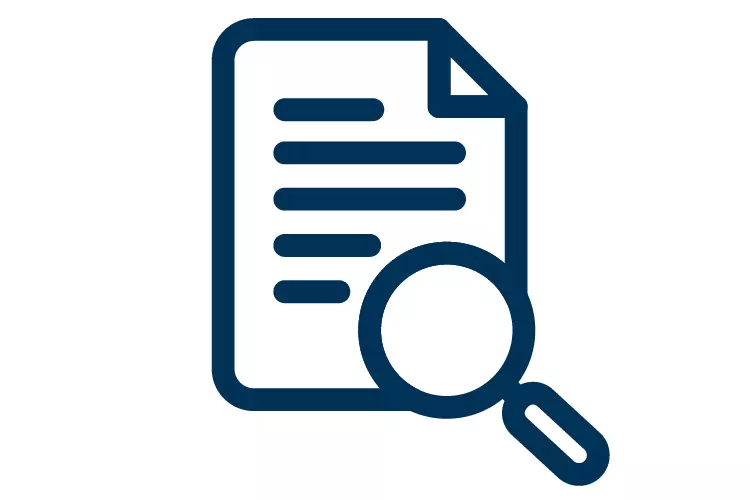
Money Smart News
FDIC’s newsletter featuring tips, updates and success stories for financial educators.
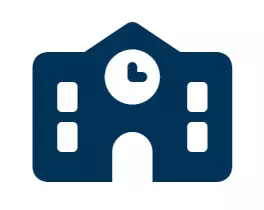
Follow Isabella and Noah as they learn about basic banking terms and financial concepts.
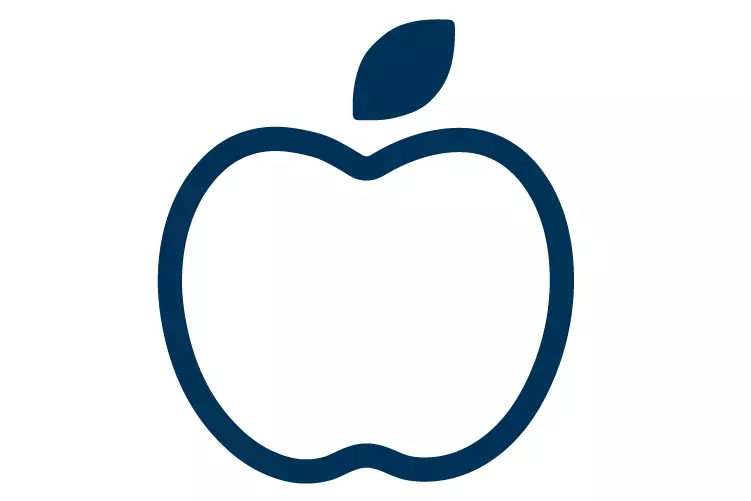
Teacher Online Resource Center
Here you will find tools to help you teach financial education including lesson plans, videos, and other resources.
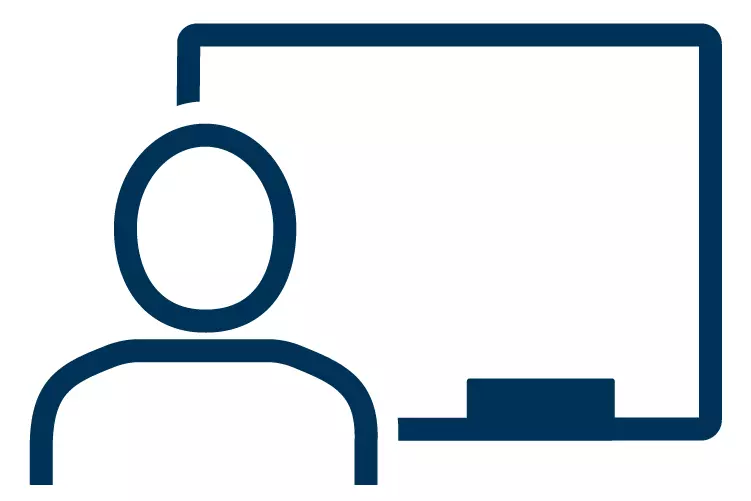
Train-the-Trainer Program
Provides guidance with videos, workshops, and webinars

Training & Events
Announcements of upcoming Money Smart events for Train-the-Trainer and Small Business events.
Last Updated: April 11, 2024

IMAGES
COMMENTS
Definition. Secondary education refers to the stage of formal education that follows primary education and precedes higher education. It is typically offered to students between the ages of 14 and 18, although the specific age range may vary depending on the educational system and country.
Secondary education is the second stage of formal education, usually from age 11 to 18. Learn about the benefits, challenges and solutions of secondary education in different countries, such as France, Germany and Britain.
Primary education is equivalent to ISCED Level 1 and is compulsory in almost every country. is the next stage of formal education after primary education. Secondary education is often split up into two different sections—. Lower secondary education follows directly after primary education and is considered the second stage of basic education ...
Secondary education is the last six or seven years of statutory formal education in the United States. It culminates with twelfth grade (age 17-18). Whether it begins with sixth grade (age 11-12) or seventh grade (age 12-13) varies by state and sometimes by school district. [ 1]
Secondary school education is the educational level between primary and higher education, usually serving students aged 12 to 18. It typically comprises two distinct stages: lower and upper secondary, each lasting around three years. Lower secondary students receive a broad education in various subjects, including mathematics, science ...
Secondary school is an educational stage after primary school and before tertiary education. It varies by country in terms of name, duration, curriculum, and post-secondary options. Learn more about secondary school in the U.S., Canada, Australia, New Zealand, U.K., and South Africa.
In the U.S., secondary education, commonly known as high school, typically includes grades 9-12. Secondary education students learn about general subjects, such as English, math and science, and complete elective courses. Secondary education schools take many forms and offer a variety of learning environments. View Schools.
Learn about the traditional second stage of formal education, typically from ages 11 to 18, and its historical and philosophical aspects. Find out how secondary education has changed over time and across cultures.
Secondary education is learning and educational activities after primary education, preparing for various education and work options. UNESCO UIS distinguishes lower and upper secondary education based on ISCED 2011.
Secondary education is the level of education that builds on primary education and prepares for further studies or work. It covers lower and upper secondary education according to ISCED classification.
Learn the meaning of secondary education, the type of education for children between 11 and 18 in the UK. Find out how to pronounce it, see pictures and example sentences, and explore related words and topics.
Primary education aims to provide a broad-based education and develop basic literacy and numeracy skills. On the other hand, secondary education follows primary education and is usually provided in middle schools, high schools, or secondary schools. It typically covers a period of four to six years and offers a more specialized curriculum ...
Notable non-governmental actors in elementary and secondary education include teachers' unions and schools of education, along with parents, philanthropists, vendors, and other advocates.The ...
Secondary education encompasses the years between elementary school and college, with curricula ranging from language arts, social studies, and mathematics to vocational and physical education. RAND conducts research on secondary education throughout the world, exploring such topics as the role of sports and physical education, programs that ...
Learn about the global trends and challenges of secondary education, including enrollment, completion, out-of-school rates, and gender parity. Find data, resources, and definitions for lower and upper secondary education levels.
The meaning of SECONDARY SCHOOL is a school intermediate between elementary school and college and usually offering general, technical, vocational, or college-preparatory courses. ... a job that requires at least a secondary school education . ... Post the Definition of secondary school to Facebook Facebook.
March 13, 2017. Primary and Secondary Education: Context. Education is one of the most important drivers for ending poverty and boosting shared prosperity, as well as for improving health, gender equality, peace, and stability. Guaranteeing the human right to a basic education means little unless schooling leads to learning for all children and ...
Secondary education refers to the stage of education that follows primary education and typically includes middle and high school education and vocational or technical training. Its main focus is ...
Primary and Secondary Education At-A-Glance. Education is one of the most important drivers for ending poverty and boosting shared prosperity, as well as for improving health, gender equality, peace, and stability. Guaranteeing the human right to a basic education means little unless schooling leads to learning for all children and youth.
Definition of secondary education in the Definitions.net dictionary. Meaning of secondary education. Information and translations of secondary education in the most comprehensive dictionary definitions resource on the web.
Postsecondary education, also known as tertiary education, is the education level that follows the successful completion of secondary education, often referred to as high school. Postsecondary education includes universities and colleges, as well as trade and vocational schools. Postsecondary education encompasses both undergraduate and ...
The FDIC Money Smart financial education program can help people of all ages enhance their financial skills and create positive banking relationships. First released in 2001 and regularly updated since then, Money Smart has a long track record of success.